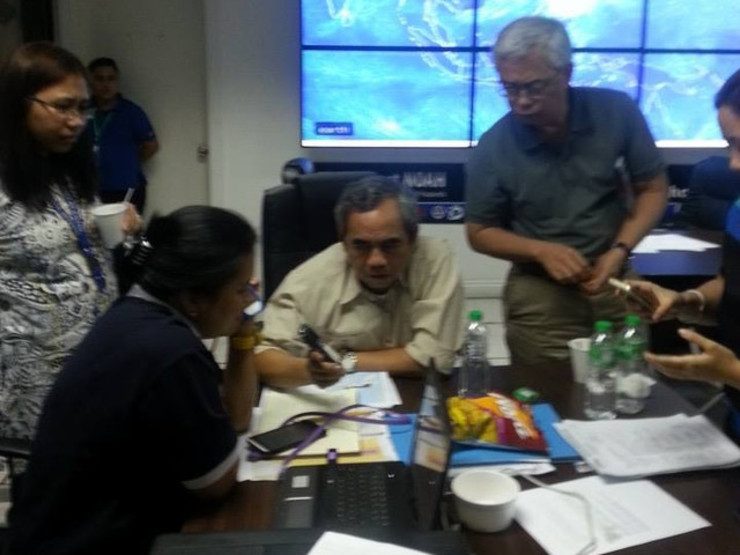SUMMARY
This is AI generated summarization, which may have errors. For context, always refer to the full article.

MANILA, Philippines – Never underestimate the power of a phone call.
A baby girl was born on Saturday, December 6, in the town of Lawaan, Eastern Samar, just as Typhoon Ruby (international name: Hagupit) began making its way across the province – thanks to the help of a doctor in Metro Manila.
Miles away in Lawaan, 23-year-old Marilyn Ramonolos was about to give birth inside an evacuation center, but there was a problem: equipment was scarce and there was no doctor in sight.
The town mayor, Candida Gabornes, called the National Disaster Risk Reduction and Management Council (NDDRMC) in Manila to ask for help. NDRRMC chief Alexander Pama and his team searched for a doctor on call when Martin Aguda of the Orange Helmets suggested doctor Ted Esguerra.
“Kasi di naman daw talaga ako natutulog (They called me up because I don’t sleep anyway),” Esguerra told Rappler in a Saturday phone interview.
‘Community effort’
Before Esguerra could start the “online medical control” of the case, he needed basic information about the mother. He texted the midwife first, then gave her a call.
The situation was anything but ideal: the evacuation center was packed and the power was out.
“Medyo [nagpa-panic sila], s’yempre. Ikaw kaya? Sumisigaw, pero hindi ‘yung sigaw na hysterics. Naririnig ko sinasabi nila: ‘Yung blackboard! Iharang sa nanay,’” Esguerra said.
(They were panicking, of course. Wouldn’t you be? But they weren’t in hysterics. I heard them ordering someone to use a blackboard to cover the mother.)
Esguerra said he was confident the birth would go by without a problem. After all, Ramonolos’ past two pregnancies went by without a hitch.
“I told them to boil some water, sterilize the thread they would use, make sure the mother was breathing properly, to make sure the placenta was delivered properly,” said Esguerra.
In the middle of the phone call, Esguerra said, the town mayor arrived with 4 police personnel who also happened to be nurses. The nurses and midwife all helped in delivering the baby.
“It was a community effort,” noted the doctor.
A little before 10 pm, Ramonolos welcomed a new baby girl into the world. In a post on Facebook, the Philippine Information Agency said the baby would be named “Ruby.”
She’s the “hope in the middle of the storm,” said Esguerra in a Facebook post.
Disaster experience
Esguerra, a veteran when it comes to disaster preparedness and survival, said it’s not the first time he’s had to help out in a medical case remotely. In the past, he helped resuscitate a drowning victim through a phone call.
It’s his first time, though, to help deliver a baby through a call.
What can emergency responders do to help deliver a baby in times of calamity? Here are a few tips from Esguerra:
- Look for a clean, elevated place for the expectant mother to lie upon. Don’t panic.
- Look for assistance or help – ask someone to boil water for you. Get nylon thread, scissors, pan, etc.
- Ask the mother how many pregnancies she’s had, if she had any delivery in the past, while instructing her to breath through her mouth to calm her down.
- Wash your hands if you cannot get gloves.
- Get ready to catch as you instruct the mother to iri (push).
- If the baby is out, deal with the head right away by cleaning the mouth and nose with a clean cloth. Don’t let the cord get entangled around the neck.
- Don’t slap the baby to make him or her cry. Note the time of delivery and place the baby on the side of the mother.
- Wait for the placenta to get out naturally. Wrap the baby while waiting.
- You may tie the cord with clean nylon cord which was boiled in the pan of water.
- Find ways to get to the nearest medical facility.
– Rappler.com
Add a comment
How does this make you feel?
There are no comments yet. Add your comment to start the conversation.